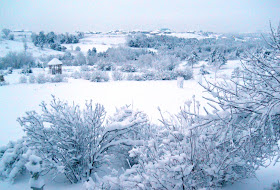 |
| 'Champlain' |
The purpose of Ogilvie and Arnold's article was primarily to review the history of the breeding of hardy roses in Canada, but they have an interesting table in the article that provides an extra bit of information I wish was available for all roses in commerce, particularly for those that are blurring the boundaries between once-blooming and remontant roses. In a table listing the Canadian cultivars, their color, habit, number of petals, and hardiness zones, they also listed the number of weeks each cultivar was in bloom between June 1st and September 30th, presumably at the L'Assomption site, and the relative blackspot resistance there:
Cultivar Weeks of Bloom Blackspot Resistance
'Assinaboine' 9.0 medium'Cuthbert Grant' 10.0 high
'Morden Ruby' 8.9 medium
'Adelaide Hoodless' 8.8 medium
'Morden Amorette' 10.0 medium
'Morden Cardinette' 10.0 medium
'Morden Centennial' 10.7 medium
'Morden Blush' 12.3 medium
'Morden Fireglow' 9.0 medium
'Martin Frobisher' 13.3 medium
'Henry Hudson' 13.4 high
'David Thompson' 12.7 high
'Charles Albanel' 11.3 high
'John Cabot' 10.3 high
'William Baffin' 10.4 high
'Henry Kelsey' 9.0 medium
'John Davis' 11.6 high
'John Franklin' 14.0 medium
'Champlain' 13.6 medium
'Alexander Mackenzie' 9.4 high
'J.P.Connell' 8.1 medium
'Capt. Samuel Holland' 12.2 high
'Louis Jolliet' 14.5 high
I know this table reproduced from Ogilvie and Arnold leaves a lot of questions for those of a scientific mindset (how many years of bloom were averaged to obtain these numbers, spraying protocols, etc), but this information from two individuals involved in the breeding of these roses is still priceless for gardeners who are choosing roses for their landscapes. Yes, I agree that it would be nice to have disease resistance ratings and bloom periods like this for various climates and locations (in Virginia versus Kansas for instance), but for now, this information is the best available and I think that it relatively fits what I see for these roses here in Kansas. 'Champlain' for instance is almost never without bloom and perhaps once or twice in a bad year I have sprayed it for blackspot, compared to 'Cuthbert Grant' who seems to have several cycles with rest periods in-between, but whom I've never sprayed for blackspot.
It also encourages me to keep better records. I grow somewhere around 150 roses at last count. Information on the dozen Buck roses I grow, for instance, might be of interest to others. If only I didn't have to earn money to support the lifestyle the missus has become accustomed to, I could just walk around Thoreau-like with a notebook jotting down the blooming periods of roses. I'm sure that someday I'll have the time. I should perhaps plan for reincarnation as a bumblebee. I'd have time to visit all the roses and the ability to sting those who annoy me. Not a bad life, eh?



























